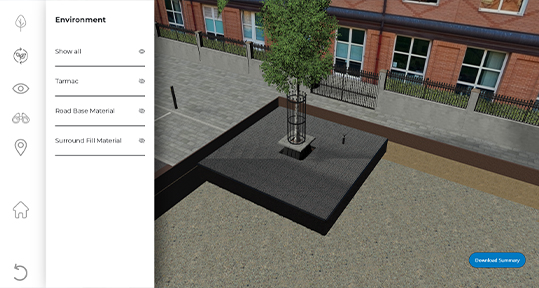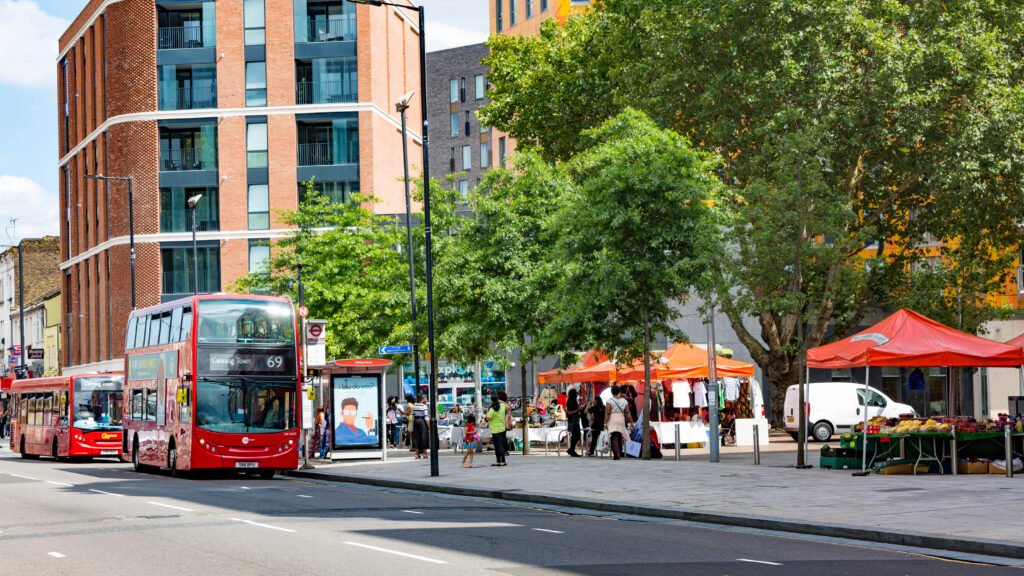The London Borough of Hammersmith & Fulham is located strategically on the north bank of the River Thames, due west of the City of London.
The London Borough of Hammersmith & Fulham is located strategically on the north bank of the River Thames, due west of the City of London. Situated on the main west road from London to Bristol, Wales and the West Country, Hammersmith grew around this major road, serving travellers into and out of London. Although a part of Fulham until the early 1800s, the town grew rapidly as the arrival of the railway made it possible to get into central London very quickly.
Beneath the western boroughs, much of the combined sewerage system is based on one of the many “hidden rivers” that run beneath the capital. This river, known as Counters Creek has for centuries drained a large catchment area, from as far north as the London Boroughs of Brent and Camden, was never designed to cope with either the drainage of stormwater from a largely hard paved area (much of Hammersmith was market gardens or nurseries supplying produce to the London markets) or indeed foul sewage from thousands of properties.
Project
Location
Contractor
Landscape Architect
The London Borough of Hammersmith & Fulham is located strategically on the north bank of the River Thames, due west of the City of London.
The London Borough of Hammersmith & Fulham is located strategically on the north bank of the River Thames, due west of the City of London. Situated on the main west road from London to Bristol, Wales and the West Country, Hammersmith grew around this major road, serving travellers into and out of London. Although a part of Fulham until the early 1800s, the town grew rapidly as the arrival of the railway made it possible to get into central London very quickly.
Beneath the western boroughs, much of the combined sewerage system is based on one of the many “hidden rivers” that run beneath the capital. This river, known as Counters Creek has for centuries drained a large catchment area, from as far north as the London Boroughs of Brent and Camden, was never designed to cope with either the drainage of stormwater from a largely hard paved area (much of Hammersmith was market gardens or nurseries supplying produce to the London markets) or indeed foul sewage from thousands of properties.
Project
Location
Contractor
Landscape Architect
Project
Location
Contractor
Landscape Architect
Hammersmith has suffered from flooding for many years due to the upstream catchment pre-loading issues which have led to basement inundation to many properties. The water company has been constructing relief measures to reduce the risks, but the Borough was concerned to actively seek opportunities to further reduce the pressure on the sewer system.
Overstone Road, a short residential road close to the centre of Hammersmith became high on the list for intervention; built in the mid – 1800s with terraced housing with no off-road parking, the design was challenging. The residents were broadly supportive of the project but concerned about the potential loss of car parking spaces. Careful consideration of all of the factors led to collaborative working with the highways, drainage and arboricultural teams and a full GreenBlue Urban ArborFlow system were specified, and installed along both sides of the street, below parking areas and connected to trees planted in build-outs. The stormwater is collected in a gully pot adjacent to the buildouts and distributed across the top of the RootSpace soil cell, allowed to percolate down through the soil. The system is designed to maximise infiltration into the sub-soil, and when the sub-soil is full to capacity, connections to the sewer system operate as overflows preventing flooding in the roads. The tree pits were sized to give sufficient volume to enable them to attain species potential size and longevity, and also to make sure that the stormwater from the vast majority of rainfall events stays within the system – only in a small percentage of days will water discharge from the ArborFlow system, and when it does, it will be clean.
Hammersmith has suffered from flooding for many years due to the upstream catchment pre-loading issues which have led to basement inundation to many properties. The water company has been constructing relief measures to reduce the risks, but the Borough was concerned to actively seek opportunities to further reduce the pressure on the sewer system.
Overstone Road, a short residential road close to the centre of Hammersmith became high on the list for intervention; built in the mid – 1800s with terraced housing with no off-road parking, the design was challenging. The residents were broadly supportive of the project but concerned about the potential loss of car parking spaces. Careful consideration of all of the factors led to collaborative working with the highways, drainage and arboricultural teams and a full GreenBlue Urban ArborFlow system were specified, and installed along both sides of the street, below parking areas and connected to trees planted in build-outs. The stormwater is collected in a gully pot adjacent to the buildouts and distributed across the top of the RootSpace soil cell, allowed to percolate down through the soil. The system is designed to maximise infiltration into the sub-soil, and when the sub-soil is full to capacity, connections to the sewer system operate as overflows preventing flooding in the roads. The tree pits were sized to give sufficient volume to enable them to attain species potential size and longevity, and also to make sure that the stormwater from the vast majority of rainfall events stays within the system – only in a small percentage of days will water discharge from the ArborFlow system, and when it does, it will be clean.
As with all properly designed and implemented sustainable drainage schemes, this installation provides both water quantity reduction, water quality improvement, biodiversity increase and a huge amount of added amenity value. The residents have taken a real interest in these new street trees and have spent their own time and money to underplant the trees, making a massive visual impact to the whole road. Another great GreenBlue Urban success story – making our cities cleaner and greener.
As with all properly designed and implemented sustainable drainage schemes, this installation provides both water quantity reduction, water quality improvement, biodiversity increase and a huge amount of added amenity value. The residents have taken a real interest in these new street trees and have spent their own time and money to underplant the trees, making a massive visual impact to the whole road. Another great GreenBlue Urban success story – making our cities cleaner and greener.









